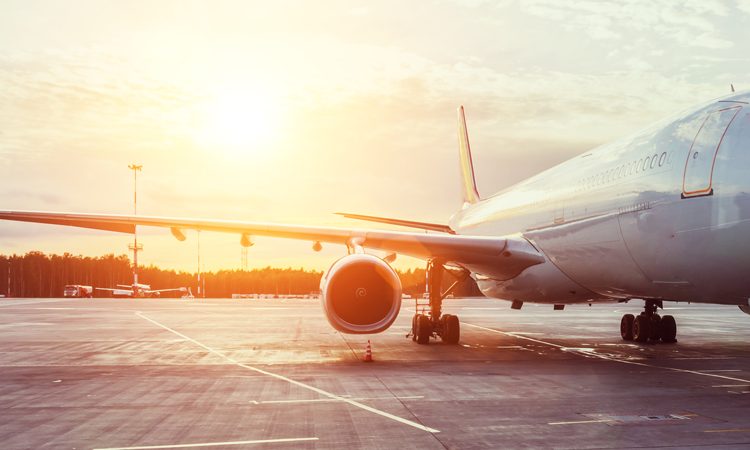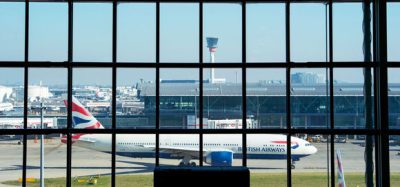Strong demand for air travel amidst macroeconomic risks
- Like
- Digg
- Del
- Tumblr
- VKontakte
- Buffer
- Love This
- Odnoklassniki
- Meneame
- Blogger
- Amazon
- Yahoo Mail
- Gmail
- AOL
- Newsvine
- HackerNews
- Evernote
- MySpace
- Mail.ru
- Viadeo
- Line
- Comments
- Yummly
- SMS
- Viber
- Telegram
- Subscribe
- Skype
- Facebook Messenger
- Kakao
- LiveJournal
- Yammer
- Edgar
- Fintel
- Mix
- Instapaper
- Copy Link
Posted: 14 October 2022 | International Airport Review | No comments yet
Airports Council International World has released its latest assessment analysing the impact of the COVID-19 pandemic, showing strong demand for air travel despite heightened macroeconomic risks.


Airports Council International (ACI) World has published its latest assessment analysing the impact of the COVID-19 pandemic on airports, showing strong demand for air travel amidst heightened macroeconomic risks.
“The recent momentum created by the lifting of many health measures and the relaxation of most travel restrictions in many European countries and in the Americas has renewed industry optimism,” commented ACI World Director General Luis Felipe de Oliveira.
“There is still an uneven recovery, a gap exists among markets, especially where strict travel restrictions are still enforced, COVID-19 vaccine availability and uptake are limited, and geopolitical conflicts are visible. This gap resulted in offsetting the impact of pent-up demand during the early Northern Hemisphere summer season on a global scale.
“Despite this, air travel should see a continued uptick overall in the second half of 2022, moving the industry closer to its full recovery – still forecast for 2024.”
Airport traffic recovery: 2021 and H1 2022
With the global passenger volumes for the full-year 2021, compared to the projected baseline (the pre-COVID-19 forecast for 2021) of 9.8 billion passengers, it is estimated that the COVID-19 outbreak reduced traffic by 5.2 billion passengers, representing a potential loss of 52.9 per cent.
The recent momentum created by the lifting of many health measures and the relaxation of most travel restrictions in many European countries and in the Americas has renewed industry optimism”
During the first two quarters of the year 2022, global passenger volume was 1.3 billion and 1.7 billion, which are 62.0 per cent and 75.2 per cent of 2019 levels. Compared to the projected baseline (2019), the estimated traffic losses represent a loss of 44.4 per cent and 32.2 per cent respectively.
Recovery was mainly driven by the sudden surge of air travel demand during the Northern Hemisphere summer of 2022, following the relaxation of travel restrictions, which resulted in higher-than-expected demand.
Airport traffic recovery: 2022 to 2024
While many indicators are pointing towards recovery with strong pent-up consumer demand with the lifting of travel restrictions, historically low unemployment rates, and above 80 per cent vaccination rates in major aviation markets, the industry is also facing some headwinds, from the ongoing conflict in Ukraine to bottlenecks in global supply chains, that threaten to disrupt the pace of the post-pandemic recovery.
The most obvious manifestation of such risks is the significant increase in prices for different sectors, particularly food and energy. This sudden rise in cost has in turn produced a tightening of global monetary policy, with central banks increasing interest rates to tame inflation. This will inevitably cause a decrease in economic activity and potentially impact consumer confidence. The potential for a recession as we approach 2023 may also represent an additional headwind for the aviation sector.
Despite these risks, global passenger traffic in 2022 is expected to be 6.8 billion, representing a loss of 33.1 per cent compared to the projected baseline, which is 74.4 per cent of 2019 traffic.
Global domestic passenger traffic is still expected to reach its 2019 level in late 2023 with full-year 2023 traffic on par with the 2019 level. Global international passenger traffic will require almost one more year to recover and will reach its 2019 high only in the second half of 2024.
Related topics
Air traffic control/management (ATC/ATM), Airside operations, COVID-19, Passenger experience and seamless travel, Passenger volumes, Terminal operations


















